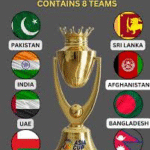Description Of PAK-IND Tension
PAK-IND Tension has long been one of the most complex and sensitive geopolitical issues in South Asia. Despite cultural similarities, shared history, and deep human connections, the two nations have faced decades of political tension, military standoffs, and diplomatic challenges.
The India-Pakistan tension continues to shape regional stability, economic growth, and global diplomacy. Understanding its roots and future prospects is key to envisioning a peaceful South Asia. Newsmax
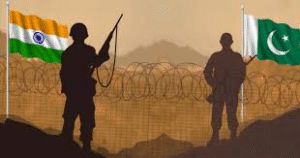
1. Historical Background of India-Pakistan Tension
The seeds of the India-Pakistan rivalry were sown during the Partition of 1947, when British India was divided into two independent states — India and Pakistan. The event led to one of the largest migrations in human history and sparked communal violence that left deep emotional scars.
Soon after independence, the two nations clashed over Kashmir, a region both claim in full but control in parts. This dispute has remained the central issue fueling decades of mistrust and confrontation.
2. Major Conflicts and Standoffs
Since independence, India and Pakistan have fought three full-scale wars — in 1947–48, 1965, and 1971 — as well as several smaller military engagements.
-
1947–48 War: The first conflict over Kashmir resulted in a divided region, with the Line of Control (LoC) becoming the de facto border.
-
1965 War: Another major battle over Kashmir ended in a stalemate, reinforcing hostilities.
-
1971 War: This war led to the independence of Bangladesh, increasing political bitterness between the two nations.
-
Kargil Conflict (1999): A limited but intense confrontation in the mountains of Kashmir, reigniting global concerns about nuclear escalation.
These repeated confrontations have kept both nations in a cycle of military preparedness, political blame, and diplomatic distance.
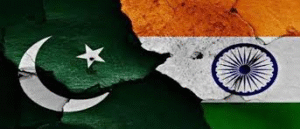
3. Core Issues Behind the Tension
The India-Pakistan tension is driven by multiple factors — political, territorial, religious, and strategic.
a. The Kashmir Dispute
At the heart of the issue lies Kashmir, a territory of immense cultural and geopolitical significance. Both nations claim the region, and ongoing violence has affected millions of civilians. Newsmax
b. Cross-Border Terrorism
India accuses Pakistan of supporting cross-border terrorism, while Pakistan denies the allegations and emphasizes the need to resolve the Kashmir issue through dialogue. These accusations have often derailed peace efforts and bilateral talks.
c. Water and Trade Disputes
The Indus Waters Treaty governs river-sharing between the two nations, but growing water scarcity and infrastructure development have triggered disagreements. Trade restrictions and lack of economic cooperation further deepen mistrust.
d. Political Narratives and Nationalism
Domestic politics on both sides often fuel tensions. Nationalist rhetoric, political gain, and public sentiment can make it difficult for leaders to take bold steps toward peace.
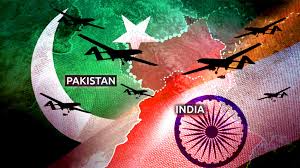
4. Diplomatic Relations and Peace Efforts
Over the decades, both nations have made several attempts to improve relations — through peace talks, summits, and cultural exchanges.
Efforts such as the Lahore Declaration (1999), Agra Summit (2001), and Composite Dialogue (2004–2008) showed moments of promise, but progress has often been undone by acts of violence or changing political climates.
While diplomatic communication continues through back channels and international mediation, trust remains fragile.
5. Impact of India-Pakistan Tensions on the Region
The long-standing hostility between India and Pakistan has broader implications for South Asian security and global peace.
-
Economic Impact: Limited trade and military spending reduce opportunities for development and poverty reduction.
-
Regional Stability: The rivalry affects neighboring countries, making regional cooperation through platforms like SAARC difficult.
-
Global Concern: Both nations possess nuclear weapons, and any escalation raises serious concerns about global safety.
-
Humanitarian Cost: Border conflicts and militant activities disrupt lives and hinder progress in border regions. Newsmax
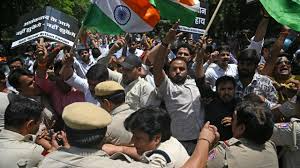
6. The Role of Media and Public Perception
Media in both countries play a major role in shaping public opinion. While some outlets encourage nationalism and rivalry, others call for peace, dialogue, and cultural collaboration.
The rise of social media has intensified discussions but also spread misinformation and emotional narratives. Responsible reporting and mutual understanding are crucial to reducing hostility.
7. Path Forward: Dialogue, Diplomacy, and Development
Despite the challenges, peace between India and Pakistan is possible — but it requires political courage, consistent diplomacy, and people-to-people engagement. Newsmax
Possible steps toward progress include:
-
Reopening formal diplomatic channels.
-
Strengthening trade and cultural exchanges.
-
Reducing military rhetoric and focusing on humanitarian cooperation.
-
Engaging youth and civil society in peacebuilding initiatives.
Economic interdependence, environmental cooperation, and shared cultural values can help bridge divides. The future of South Asia depends on replacing rivalry with collaboration.
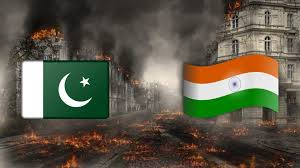
Conclusion: Hope Beyond Hostility
The India-Pakistan tension is not merely a political issue — it’s a human story of shared pain, hope, and history. Both nations have more to gain through peace than through conflict.
As the world moves toward global cooperation, it is time for India and Pakistan to write a new chapter — one built on trust, development, and dialogue, not division. The path may be difficult, but the dream of a peaceful, prosperous South Asia is worth pursuing. Visit Now





